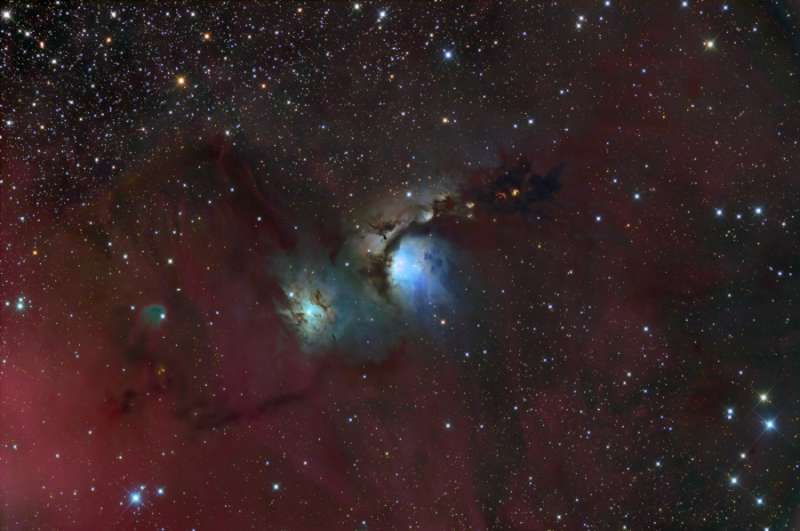
|
Credit & Copyright: Thomas V. Davis
(tvdavisastropix.com)
Explanation:
Interstellar
dust clouds and glowing nebulae abound in the fertile
constellation of Orion.
One of the
brightest,
M78, is centered in this colorful,
wide field view, covering an area
north of Orion's belt.
At a distance of about 1,500 light-years, the
bluish reflection nebula is
around 5 light-years across.
Its tint is due to dust
preferentially
reflecting the blue light
of hot, young stars.
Reflection nebula NGC 2071 is just to the left of M78.
To the right of M78 and much more compact in appearance,
the intriguing McNeil's Nebula is a recently
recognized variable nebula
associated with
the formation of a sun-like star.
The remarkably deep exposure also brings out the region's faint but
pervasive reddish glow of atomic hydrogen gas.
|
January February March April May June July August September October November December |
| |||||||||||||||||||||||||||||||||||||||||||||||||||||||
NASA Web Site Statements, Warnings, and Disclaimers
NASA Official: Jay Norris. Specific rights apply.
A service of: LHEA at NASA / GSFC
& Michigan Tech. U.
Based on Astronomy Picture
Of the Day
Publications with keywords: reflection nebula - emission nebula
Publications with words: reflection nebula - emission nebula
See also:
- APOD: 2025 September 19 Á The NGC 6914 Complex
- APOD: 2025 September 10 Á The Great Lacerta Nebula
- APOD: 2025 July 21 Á Cats Paw Nebula from Webb Space Telescope
- APOD: 2025 July 16 Á The Rosette Nebula from DECam
- APOD: 2025 July 5 Á Ou4: The Giant Squid Nebula
- APOD: 2025 June 26 Á The Seagull Nebula
- NGC 6164: A Dragon s Egg
